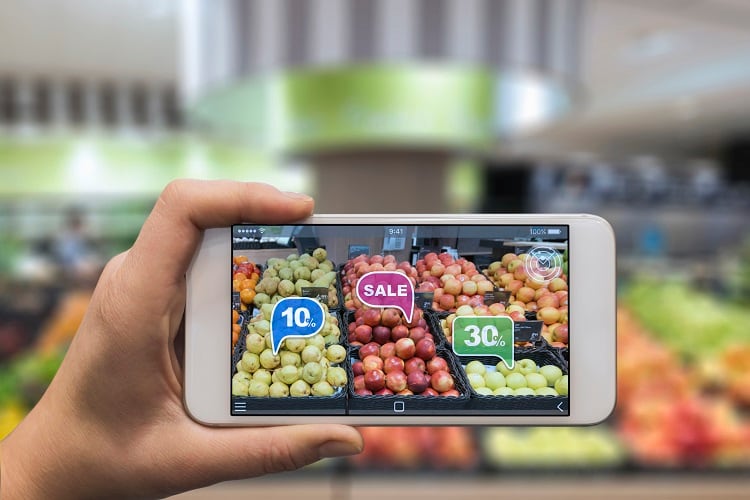As consumers become accustomed to time-efficient products and tools, they will be more receptive to adopting technologies like augmented reality (AR) and artificial intelligence (AI). Utilising automated shopping lists and meal-planning apps as essential, everyday aids will become typical, market intelligence company Mintel anticipated in its Global Food and Drink Trends 2024 report.
AR and AI tech will span a range of solutions in food preparation and consumption, allowing consumers to choose the right fit for their at-home and dining needs. The tech will seek to strike a balance between when consumers want to explore making new and unfamiliar dishes and when they want to simplify the resources they require to plan, shop and cook.
From novel to everyday
AR technology, in particular, which integrates digital information with a consumer environment in real-time, will advance and become more affordable in the next few years, Mintel said in its Global Food and Drink Trends 2024 report.
Today, AR applications can convey crucial nutritional information, strengthen brand storytelling, increase brand engagement, highlight special offers and limited edition menu options, emphasise less visible information, and improve consumers’ overall experience.
Tech developers can use AR in food packaging to add extra information and provide details on the history of food manufacturing or present fun product-accompanying games. Consumers can also scan AR labels and codes to access hard-to-spot information relating to nutrition, supporting consumers’ decision-making processes. Menus can feature AR, too, allowing retailers to present information, including ingredients, calories and nutritional content, in a clear and interactive way.
As the use of AR in food becomes more sophisticated, it will move from an accompanying and optional gadget to a proactive and supportive tool. “A key function of food and drink brands will be to guide users through day-to-day activities such as cooking, providing instructions in front of their eyes during tasks and alerting them to any missteps or imminent complications,” Ayisha Koyenikan, Associate Director at Mintel Food & Drink said.
Convenience dominates consumers’ tech demands
The concept of convenience is ever-changing, and the COVID-19 pandemic has fast-tracked consumers’ search for quick access to quality food and drink experiences in their everyday routines. Therefore, ‘Eating, Optimised’ is a leading trend in 2024, Mintel reported.
With a growing comfort in tech as a beneficial companion, consumers will increasingly embrace and trust tech like AR and AI, which is growing in sophistication, to enhance their dining experiences. Over a third (38%) of Italian consumers express interest in using AR to elevate their food and drink experiences, Mintel reported.
In response, manufacturers and tech developers are evolving their offerings to streamline consumers’ time spent in the kitchen. Multi-appliance cooking instructions and product ranges crafted to provide simultaneous and uniform cooking to maximise convenience demonstrate this streamlined approach.
The Netherlands’ Pickup Limes app offers a personalised touch, letting users tailor plant-based recipes to their dietary needs. Nestlé’s DiGiorno is experimenting with a vending machine that delivers hot, ready-to-eat pizzas in three minutes.
In the UK, 38% of home chefs are interested in recipes that reflect their regular grocery purchases. Hellmann’s Fridge Night app encourages users to empty their fridges weekly by creating meals with available ingredients and Hellmann’s products.
Making tech familiar
The 'Eating, Optimised’ 2024 trend evolves from Mintel’s 2023 Global Food and Drink Trend ‘Unguilty Pleasures’, which relates to the idea that food must be delicious regardless of convenience. Unwilling to compromise on taste and experience, as consumers integrate more technology for efficient meal prep, enjoying cooking and eating remains paramount.
The 2023 Global Food and Drink Trend 'Adaptable Cooking’ also inspires 2024’s Eating, Optimised, as it observed how consumers adapted to food and drink disruptions, like supply chain issues, by becoming more versatile with their cooking. This ingenuity persists as home cooks incorporate more tech into their kitchens to ensure convenience without sacrificing taste.
Over the next two to five years, daily encounters with tech will transform AI, AR, and other tools into indispensable kitchen timesavers, Mintel predicted, compelling brands and retailers to deliver seamless and convenient experiences.
For retailers, this means providing real-time shopping assistance through push notifications, personalised alerts, and AI that assists customers in finding ingredients or products while in-store, on the move, or shopping online. Localised data presents opportunities for community-specific demands and tailored vending options, such as a college campus’s need for quick, hot meals.
Brands will collaborate with tech providers to ensure their products remain relevant in the evolving digital environment. Marketing strategies will grow from targeted ads to sophisticated product placement, with AI, AR, and recipe generators recommending specific brands within personalised meal plans.
Data from these interactions will help develop new products inspired by consumer feedback and engagement. While some consumers will lean towards AI-developed products for their time-saving convenience, others will look to AI for inspiration and the joy of culinary creativity.



